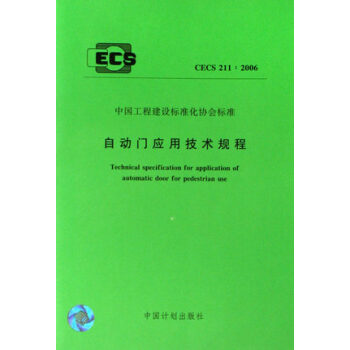![中国扶贫开发年鉴(2012)(英文版) [2012 Yearbook of China's Poverty Alleviation and Development]](https://pic.tinynews.org/11285387/rBEhUlIEPvMIAAAAAAVTO9KdcAcAAB4EAOoTJgABVNT927.jpg)

具体描述
内容简介
《中国扶贫开发年鉴(2012)(英文版)》对贫困理论进行了深入细致的梳理,并详细介绍了改革开放以来我国农村扶贫开发历程和一些著名的扶贫开发项目,利用统计年鉴的数据,计算分析各省农村贫困情况,力图让读者把握我国近年来农村贫困的发展趋势,了解地区间的贫困差距。内页插图
目录
Part Ⅰ: Arrangements for Poverty Alleviation and Development Work in the New Decade1. Central Poverty Alleviation and Development Conference
2. The "Outline for Development-Oriented Poverty Reduction in China's Rural Areas (2011 - 2020)"
3. Interpretation of the "Outline for Development-Oriented Poverty Reduction for China's Rural Areas (2011 -2020)"
Part Ⅱ: Special Poverty Alleviation
4. Policy Measures and Mechanism Innovation
5. Special Poverty Alleviation-Key Work
Part Ⅲ:Poverty Alleviation in Contiguous Poor Areas with Particular Difficulties
6. Delineation of Contiguous Poor Areas with Particular Difficulties
7. Formulation of Poverty Alleviation Planning for Contiguous Poor Areas with Particular Difficulties
8. Pilot Project of Key Problem Tackling for Development and Poverty Reduction in the Wuling Mountain area
Part Ⅳ:Local Poverty Alleviation
9. Poverty Alleviation and Development in Hebei Province
10. Poverty Alleviation and Development in Shanxi Province
11. Poverty Alleviation and Development in Inner Mongolia
12. Poverty Alleviation and Development in Liaoning Province
13. Poverty Alleviation and Development in Jilin Province
14. Poverty Alleviation and Development in Heilongjiang Province
15. Poverty Alleviation and Development in Jiangsu Province
16. Poverty Alleviation and Development in Zhejiang Province
17. Poverty Alleviation and Development in Anhui Province
18. Poverty Alleviation and Development in Fujian Province
19. Poverty Alleviation and Development in Jiangxi Province
20. Poverty Alleviation and Development in Shandong Province
21. Poverty Alleviation and Development in Henan Province
22. Poverty Alleviation and Development in Hubei Province
23. Poverty Alleviation and Development in Hunan Province
24. Poverty Alleviation and Development in Guangdong Province
25. Poverty Alleviation and Development in Guangxi Zhuang Autonomous Regions
26. Poverty Alleviation and Development in Hainan Province
27. Poverty Alleviation and Development in Chongqing
28. Poverty Alleviation and Development in Sichuan Province
29. Poverty Alleviation and Development in Guizhou Province
30. Poverty Alleviation and Development in Yunnan Province
31. Poverty Alleviation and Development in Tibet Autonomous Region
32. Poverty Alleviation and Development in Shaanxi Province
33. Poverty Alleviation and Development in Gansu Province
34. Poverty Alleviation and Development in Qinghai Province
35. Poverty Alleviation and Development in Ningxia Hui Autonomous Region
36. Poverty Alleviation and Development in Xinjiang Uygur Autonomous Region
37. Poverty Alleviation and Development in Xinjiang Production and Construction Corps
Part Ⅴ : Industrial Poverty Alleviation
38. Poverty Alleviation of Ministry of Education
39. Poverty Alleviation of Ministry of Science and Technology
40. Poverty Alleviation of Ministry of Industry and Information Technology
41. Poverty Alleviation of Ministry of Civil Affairs
42. Poverty Alleviation of Ministry of Finance
43. Poverty Alleviation of Ministry of Human Resources and Social Security
44. Poverty Alleviation of Ministry of Land and Resources
45. Poverty Alleviation of Ministry of Environmental Protection
46. Poverty Alleviation of Ministry of Housing and Urban-Rural Development
47. Poverty Alleviation of Ministry of Transport
48. Poverty Alleviation of Ministry of Water Resources
49, Poverty Alleviation of Ministry of Agriculture
50. Poverty Alleviation of Ministry of Commerce
51. Poverty Alleviation of Ministry of Culture
52. Poverty Alleviation of Ministry of Health
53. Poverty Alleviation of People's Bank of China
54. Poverty Alleviation of State-owned Assets Supervision and Administration Commission of the State Council
55. Poverty Alleviation of State Administration of Radio, Film and Television
56. Poverty Alleviation of State Forestry Administration
57. Poverty Alleviation of National Tourism Administration
58. Poverty Alleviation of State Tobacco Monopoly Administration
59. Poverty Alleviation of National Energy Administration
60. Poverty Alleviation of China Banking Regulatory Commission
61. Poverty Alleviation of Agricultural Bank of China
62. Poverty Alleviation of All-China Federation of Supply and Marketing Cooperatives
63. Poverty Alleviation of All-China Federation of Trade Unions
64. Poverty Alleviation of the Central Committee of the Communist Youth League
65. Poverty Alleviation of All-China Women's Federation (ACWF)
66. Poverty Alleviation of China Disabled Persons' Federation
67. Poverty Alleviation of All China Federation of Industry and Commerce
Part Ⅵ:East-West Pairing-off Cooperation for Poverty Reduction
68. Beijing-Inner Mongolia Autonomous Region Pairing-off Poverty Alleviation
69. Tianjin-Gansu Pairing-off Poverty Alleviation
70. Liaoning-Qinghai Pairing-off Poverty Alleviation
71. Shanghai-Yunnan Pairing-off Poverty Alleviation
72. Jiangsu-Shaanxi Pairing-off Poverty Alleviation
73. Zhejiang-Sichuan Pairing-off Poverty Alleviation
74. Fujian-Ningxia Hui Autonomous Region Pairing-off Poverty Alleviation
75. Shandong-Chongqing Pairing-off Poverty Alleviation
76. Guangdong-Guangxi Pairing-off Poverty Alleviation
77. Dalian-Guizhou Pairing-off Poverty Alleviation
78. Ningbo-Guizhou Pairing-off Poverty Alleviation
79. Shenzhen-Guizhou Pairing-off Poverty Alleviation
80. Qingdao-Guizhou Pairing-off Poverty Alleviation
81. Xiamen- Gansu Linxia Hui Autonomous Prefecture Pairing-off Poverty Alleviation
82. Zhuhai-Sichuan Liangshan Yi Autonomous Prefecture Pairing-off Poverty Alleviation
Part Ⅶ: Poverty Alleviation by the Army and Armed Police
83. Review of Poverty alleviation Work
84. Poverty Alleviation and Development by the Army and Armed Forces
Part Ⅷ: Social Poverty Alleviation
85. Poverty Alleviation by China Foundation for Poverty Alleviation
86. Poverty Alleviation by China Association of Poverty Alleviation and Development
87. Poverty Alleviation by China Council for the Promotion of Construction in the Old Revolutionary Areas
88. Poverty Alleviation by the China Social Entrepreneur Foundation
89. Poverty Alleviation by Red Cross Society of China
90. Poverty Alleviation by China Women's Development Foundation
91. Poverty Alleviation by China Glory Society
92. Poverty Alleviation by China Children and Teenagers Fund
93. Poverty Alleviation by China Population Welfare Foundation
Part Ⅸ : International Cooperation
94. International Cooperation for Poverty Alleviation
Part Ⅹ : Urban Poverty Alleviation
95. Urban Poverty and Anti-poverty Measures
Appendix: Overview of Global Poverty Reduction and Development
精彩书摘
On August 30, ACFIC held in Shihezi City of Xinjiang the " Corps Action for Glorious Cause". More than 30 entrepreneur representatives participated in the talks of Xinjiang Ptoduction and Construction Corps and Well-known Ptivate Entrepreneurs. ACFIC donated 5 million Yuan for the development of social and public welfare undertakings in Xinjiang Production and Construction Corps.On August 31, Vice Minister of the United Front Work Department of the CPC Central Committee and Party Secretary and First Deputy Chairman of ACFIC Quan Zhezhu headed a delegation composed of more than 100 private entrepreneurs to participate in the "Conference and Contract Signing Ceremony of Xinjiang Uygur Autonomous Region and Well-known Private Enterprises" held in Urumqi of Xinjiang. The delegation members signed 7 investment projects respectively with relevant enterprises, prefectures and counties of Xinjiang with a total investment of 122.689 billion Yuan. The ACFIC donated 12 million Yuan to the autonomous region's federation of industry and commerce to support the development of social and public welfare undertakings of Xinjiang.
From November 29 to 30, ACFIC held the 7th Forestry Training for Private Entrepreneurs and Management Cadres" jointly with the State Forestry Administration and China Glory Society. More than 80 private entrepreneurs engaged in forestry business and nearly 20 cadres from federations of industry and commerce, forestry bureaus and China Glory Society received the training. So far, such trainings have been held for seven times, involving nearly 1,000 people, which established a good platform for private entrepreneurs to invest in forestry industry.
Continue to do statistical work for the Glorious Cause. In November, we formulated the "Annual Analysis Report on the Statistics for Private Enterprises to Participate in the Glorious Cause in 2010". This year, statistical work was done on the investment projects of private enterprises for Xinjiang and Tibet. According to the statistics submitted by the provinces, during the ,llu' Five-Year Plan" period, there were 36 Tibet-aiding investment projects with a total investment of 7.744 billion Yuan and 50 Xinjiang-aiding investment projects with a total investment of 19. 67 billion Yuan. During the "12th Five-Year Plan" period, it is estimated, there will be 15 Tibet-aiding investment projects with a total investment of 12.
……
前言/序言
用户评价
从国际交流与合作的角度来看待这本年鉴,它提供了一个绝佳的观察窗口。它不仅展示了中国自身的实践经验,也暗示了其在国际舞台上对相关议题的话语权构建。年鉴中关于国际合作部分的篇幅和内容选择,清晰地描绘了中国在向其他发展中国家分享经验时所采取的策略和侧重点。这不仅仅是简单的成果汇报,更像是一种深思熟虑的“软实力”展示。我特别留意了它在描述全球减贫努力中的角色定位,这种定位是审慎且充满自信的。对于任何希望理解当代中国对外发展援助政策和理念的国际观察家来说,这份年鉴提供了一个不可替代的第一手资料源。它让我们看到,国家层面的战略思考是如何转化为具体的外交行动和技术输出的,其背后的逻辑链条清晰可见,远比碎片化的新闻报道来得深刻和全面。
评分尽管这是一本官方发布的年鉴,但其背后所体现出的对“过程”的记录和反思,远超出了我的初步想象。它不仅仅是成就的展示板,更像是一份详尽的行动日志。我注意到其中对一些试点项目的描述,不仅仅关注了最终的成功数据,还穿插了实施过程中遇到的实际困难和政策调整的记录。这种对“曲折性”的坦诚记录,极大地增强了文本的真实感和可信度。它没有回避挑战,反而将这些挑战视为未来改进的契机,这种务实的态度是极其宝贵的。通过阅读这些片段,我得以窥见政策制定者在面对地方差异和复杂社会结构时,所付出的巨大努力和灵活应变。这种对执行层面的深入剖析,让冰冷的政策条文立刻鲜活起来,充满了人间的烟火气和解决问题的智慧。它让我们明白,宏伟的蓝图是如何一步步通过无数次的调整和修正,最终落地生根的。
评分这本书的目录结构设置,简直是为研究者量身定做的导航系统。它不是简单地按时间顺序排列,而是将复杂的扶贫开发工作,逻辑清晰地分解成了若干个相互关联的板块。你不需要提前知道具体信息在哪里,光是浏览目录,就能对过去一年的工作重点有一个立体的认知:从顶层设计到基层实践,从资金投入到项目成效,层层递进,脉络分明。这种结构设计,极大地提升了信息检索的效率。我试着去寻找一些特定的政策案例,结果发现它们被巧妙地放置在与该政策目标最相关的章节下,而不是简单地堆砌在“案例研究”这样一个泛泛的标签里。这种结构上的“智能耦合”,体现了编纂团队对主题深度的理解。对于一个需要快速定位特定领域进展的学者来说,这样的编排,简直是节省了数不清的时间,它像是一个已经预先组织好的知识网络,等待你去探索连接点。
评分这本年鉴的装帧设计实在让人眼前一亮,封面那种沉稳又不失力量感的色调,配上清晰的字体排版,初上手就给人一种非常专业、权威的印象。我把它放在书架上,即使不翻阅,仅仅是它的存在感,也让人觉得书房里多了一份严肃的气息。侧边书脊的设计也考虑得很周到,即便是高密度堆叠,也能轻易找到它。说实话,对于这种官方性质的出版物,我原本对设计期待不高,但它完全超出了预期,看得出出版方在细节上的用心。翻开内页,纸张的质感也很不错,不是那种廉价的反光纸,阅读起来眼睛很舒服,长时间查阅也不会感到疲劳。那种厚重且均匀的纸张重量,握在手里,就仿佛握住了过去一年中国在这一关键领域所有努力和成果的实体体现。这种触感上的满足感,是电子书完全无法比拟的,它让你感觉到,你正在接触的是经过深思熟虑、精心整理的“实物证据”。我尤其欣赏它在版式布局上的克制与清晰,大量的图表和数据被清晰地划分区域,不会显得拥挤不堪,让人在浩瀚的信息中依然能保持条理清晰的脉络感。这种对阅读体验的尊重,对于研究者来说,是极其宝贵的。
评分我作为一个关注宏观经济走向的业余爱好者,通常在阅读官方报告时,最头疼的就是那些密密麻麻、缺乏解释的数字堆砌。然而,这本年鉴在数据呈现的处理上,展现出了一种高超的平衡艺术。它没有因为追求数据的详尽而牺牲可读性。例如,在涉及区域差异的对比部分,那些表格的设计不仅仅是罗列数字,它似乎内置了一种引导机制,让你的目光自然地聚焦到那些关键的增长点或滞后区域。我发现自己并不是在“阅读”数据,而是在“追踪”趋势。更令人称道的是,那些关键指标的定义和统计口径似乎都有非常严谨的注释,这对于跨年度对比或者与其他国际报告进行交叉验证时,提供了极大的便利和可靠性保障。这种对统计严谨性的坚持,让这份出版物从单纯的记录工具,升华为一个可靠的研究基准。我甚至花了不少时间研究它如何处理那些难以量化的“发展”成果,这种尝试本身就体现了编制者试图捕捉复杂现实的努力。
相关图书
本站所有内容均为互联网搜索引擎提供的公开搜索信息,本站不存储任何数据与内容,任何内容与数据均与本站无关,如有需要请联系相关搜索引擎包括但不限于百度,google,bing,sogou 等
© 2025 book.idnshop.cc All Rights Reserved. 静思书屋 版权所有

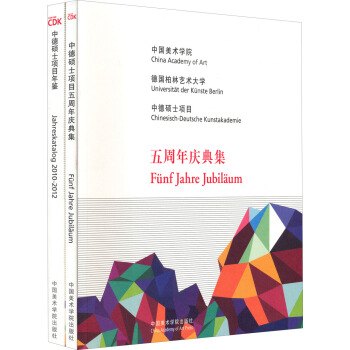
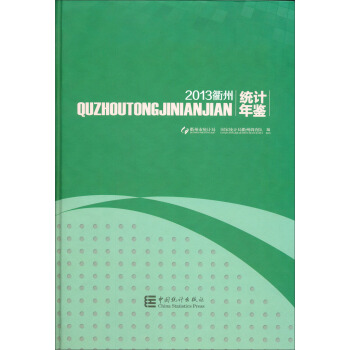
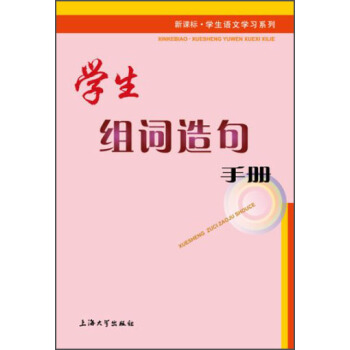
![马鞍山年鉴(2012) [Maanshan Almanac] pdf epub mobi 电子书 下载](https://pic.tinynews.org/11454076/rBEbSFNq1fAIAAAAAAItJZ0qyU4AAAJfQK8sdQAAi09428.jpg)
![中国文物年鉴(2012) [China Cultural Heritage Yearbook] pdf epub mobi 电子书 下载](https://pic.tinynews.org/11454134/rBEbR1Nq1fIIAAAAAAIQRybT1g4AAAJfQMxjRcAAhBf777.jpg)
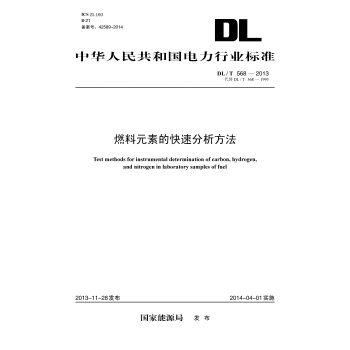
![中华人民共和国国家标准(GB 50952-2013):农村民居雷电防护工程技术规范 [Technical Code for Lightning Protection Engineering for Rural Residential Areas] pdf epub mobi 电子书 下载](https://pic.tinynews.org/11482067/53a24ec6N2ef4316d.jpg)
![江苏文化年鉴(2013) [Jiangsu Cultural Almanac] pdf epub mobi 电子书 下载](https://pic.tinynews.org/11532807/54057093N63599db7.jpg)
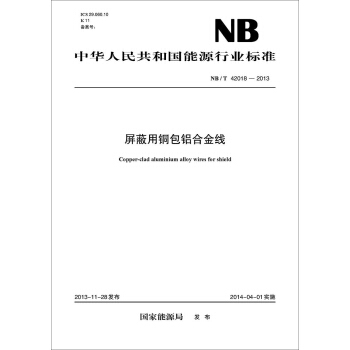
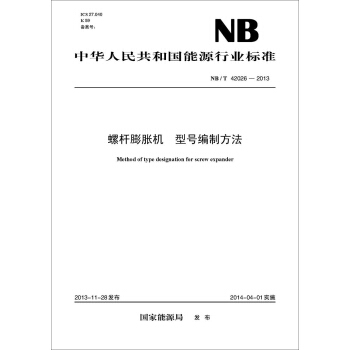
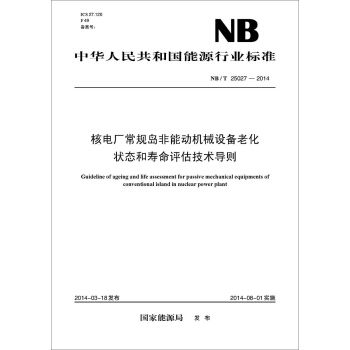

![中国工程建设协会标准(CECS 359∶2014):三氟甲烷灭火系统技术规程 [Technical Specification for Trifluoromethane Extinguishing Systems] pdf epub mobi 电子书 下载](https://pic.tinynews.org/11545197/5446fb79N888f291e.jpg)
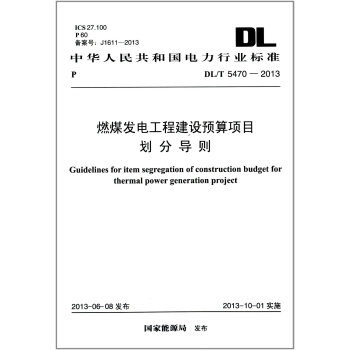
![中华人民共和国国家标准(GB/T 50279):岩土工程基本术语标准 [Standard for Fundamental Terms of Geotechnical Engineering] pdf epub mobi 电子书 下载](https://pic.tinynews.org/11546277/54d9d4bfN4b12dec8.jpg)
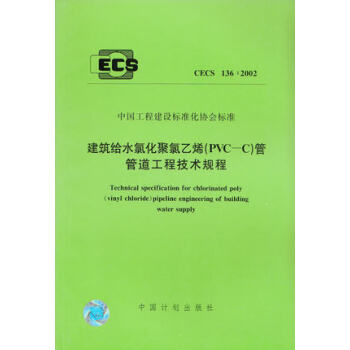
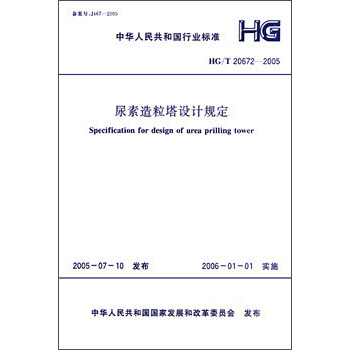

![中华人民共和国国家标准:选矿机械设备工程安装验收规范(GB 50377-2006) [Code for Acceptance of Mineral Processing Equipment Installation Engineering] pdf epub mobi 电子书 下载](https://pic.tinynews.org/11546513/542270a2N6b375606.jpg)
